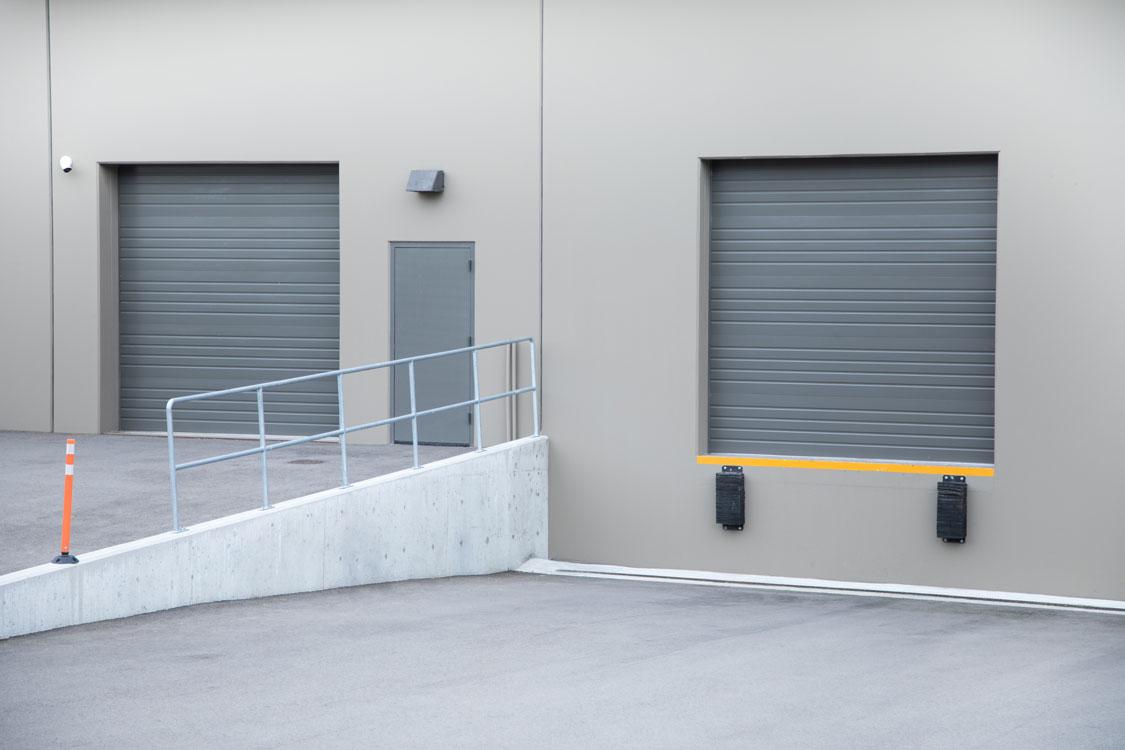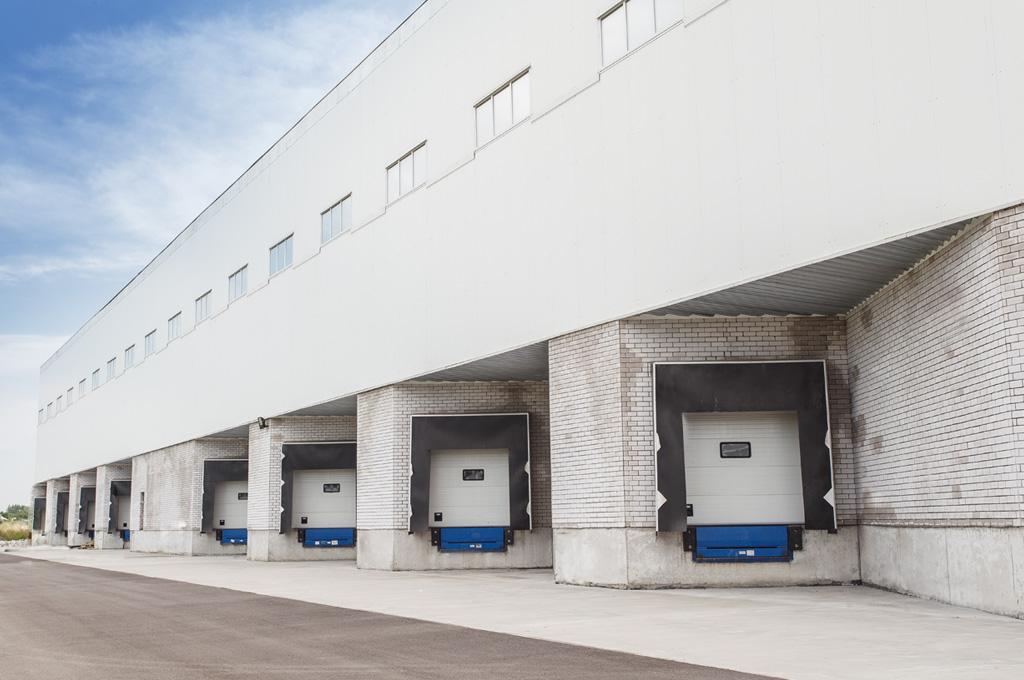Commercial Ramp Construction
Loading Docks and Dock High Ramps
Get a Quote For Your Project

Concrete Ramp Construction
- Dock high ramps for warehouses: These are ramps that are used to allow vehicles to access loading docks at the same height as the warehouse floor. They are often used in warehouses where goods are loaded and unloaded from trucks or other large vehicles.
- Dock wells: These are structures that are built around loading docks to provide shelter and protection from the elements. They can be used to keep loading areas dry and safe, and may also be used for storage or as a workspace.
- Ramps for parking garages: These are ramps that are used to allow vehicles to access different levels of a parking garage. They may be built using concrete or other materials, and are designed to be durable and able to withstand heavy use.
- ADA compliant wheelchair ramps: These are ramps that are designed to meet the requirements of the Americans with Disabilities Act (ADA) for accessibility. They may be used to provide access to buildings, loading docks, or other areas for people with disabilities.
Concrete ramp construction involves the process of building a ramp using concrete as the primary construction material. This can be done for a variety of purposes, such as providing access for vehicles, pedestrians, or people with disabilities.
The first step in concrete ramp construction is site preparation. This typically involves clearing the area where the ramp will be built, and grading the site to ensure that it is level and stable. Once the site is prepared, a foundation will be laid to provide a solid base for the ramp. This foundation may consist of a layer of compacted gravel, or it may involve the use of concrete footings or foundations.
After the foundation is in place, the next step is to form the ramp. This is typically done using wooden or metal forms, which are used to shape the concrete as it is poured. The forms are set up to create the desired slope and shape of the ramp, and they are held in place using stakes or other support structures.
Once the forms are in place, the concrete is poured and spread using a variety of tools, such as shovels, trowels, and bullfloats. After the concrete is poured, it is smoothed and finished using a variety of techniques, such as troweling, floating, and edging. The concrete is then left to cure for a period of time, typically several days, before it is ready for use.
After the concrete has cured, the forms are removed and the ramp is ready for use. Depending on the needs of the project, the ramp may also require additional finishes or treatments, such as sealing, coloring, stamping, or texturing.
Overall, concrete ramp construction requires a combination of site preparation, formwork, concrete pouring and finishing, and other techniques to create a durable and functional ramp.

Loading Dock and Ramp Experience
Loading docks and ramps are an important part of many commercial and industrial buildings, as they provide a safe and efficient way to load and unload goods. Silver Spur Concrete has a wealth of experience in constructing loading docks and ramps for businesses in the Houston area and beyond.
As a general contractor specializing in commercial construction, Silver Spur Concrete has the skills and expertise to design and build a variety of loading docks and ramps to meet the specific needs of each client. These may include dock high ramps for warehouses, dock wells, ramps for parking garages, and even ADA compliant wheelchair ramps.
In addition to construction, Silver Spur Concrete also offers full-service, turn-key solutions to ensure that every project is completed efficiently and to the highest standards. This includes managing the entire process from design to construction, as well as any necessary permitting and site preparation.
If you are in need of a loading dock or ramp for your business in the North Houston area, including Huntsville, Navasota, Hempstead, Conroe, Bryan, and College Station, don’t hesitate to contact Silver Spur Concrete for a quote.
Reasons why a business might want a loading dock or ramp:
- Efficiency: Loading docks and ramps provide a safe and efficient way to load and unload goods, which can help improve productivity and reduce delays.
- Safety: Loading docks and ramps can help prevent accidents and injuries by providing a stable, level surface for loading and unloading.
- Convenience: Loading docks and ramps can make it easier to access different parts of a building or facility, especially for people with disabilities.
- Security: Loading docks and ramps can help improve security by providing a controlled access point for goods and vehicles.
- Aesthetics: Loading docks and ramps can be designed to match the look and feel of a building, which can enhance its overall appearance.
Overall, having a loading dock or ramp can be beneficial for businesses that need to load and unload goods on a regular basis, as it can help improve efficiency, safety, convenience, security, and aesthetics.
Asphalt ramp construction involves the process of building a ramp using asphalt as the primary construction material. This can be done for a variety of purposes, such as providing access for vehicles, pedestrians, or people with disabilities.
The first step in asphalt ramp construction is site preparation. This typically involves clearing the area where the ramp will be built, and grading the site to ensure that it is level and stable. Once the site is prepared, a foundation will be laid to provide a solid base for the ramp. This foundation may consist of a layer of compacted gravel, or it may involve the use of asphalt or concrete.
After the foundation is in place, the next step is to create a base layer of asphalt. This layer is typically composed of a mix of asphalt, aggregate, and sand, and is used to create a stable and durable surface for the ramp. The base layer is typically laid using a paving machine or other specialized equipment, and is compacted using a roller or other type of compaction equipment.
Once the base layer is in place, the next step is to create the surface layer of the ramp. This layer is typically made of a mix of asphalt, aggregate, and sand, and is laid using a paving machine or other specialized equipment. The surface layer is typically finished using a variety of techniques, such as rolling, tamping, or vibrating, to ensure that it is smooth and even.
After the surface layer is in place, the ramp is typically left to cure for a period of time, typically several days, before it is ready for use. Depending on the needs of the project, the ramp may also require additional treatments or finishes, such as sealcoating or striping.
Overall, asphalt ramp construction requires a combination of site preparation, base and surface layer construction, and finishing techniques to create a durable and functional ramp.
